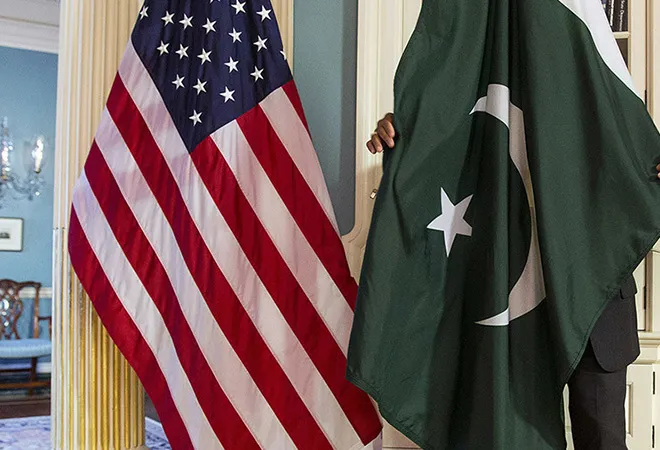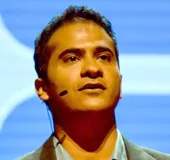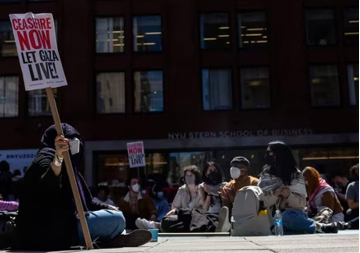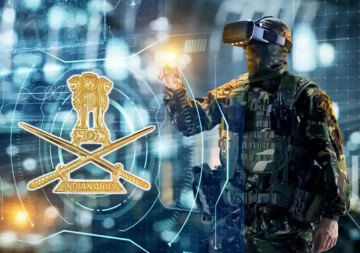
A flight into Washington D.C could see you land into one of three major airports.
It could be Baltimore Washington International located just south of downtown Baltimore. The other two airports are named after seminal American statesmen. The Ronald Reagan International Airport, named after the 40th President, while the third is the Dulles International Airport named after the 52
nd Secretary of State John Foster Dulles. Both these stalwarts of American foreign policy stirred the US through key periods and played a key role in the American relationship with Pakistan.
The US-Pakistan relationship is not just a bilateral relationship. In fact, it could even be seen as the story of Pakistan itself.
As early as the late 1930s, President Roosevelt (FDR) was wary of the traction being gained for a separate Muslim homeland in the Indian sub-continent. He went so far as to think it was a bad idea to partition the country into two nations. Many senior American diplomats concurred with FDR and thought the act of partition didn’t make sense.
However, the British urged the Americans to set up diplomatic relations with Pakistan and hence an embassy ended up in Karachi (erstwhile capital of Pakistan). The then Secretary of State Dean Acheson held the firm view that it would be India that would be a natural ally. However, good relations with Pakistan were also a necessity, but the Americans never really saw Pakistan as genuine strategic partners.
As Pakistan’s former ambassador to Washington, Hussain Haqqani so accurately and articulately quotes in his book, when Pakistan was formed it got 19 percent of the land of British India, 15 percent of the country’s resources but a whopping 33 percent of the army.
Most states raise an army to counter the threat, but in Pakistan’s case, they raised the threat of a much larger and perceived hostile neighbour India, to justify the size of the army.
The Pakistanis got a sense of the Soviet-American power blocs that were beginning to take shape. They realised, they needed to make themselves useful for American interests in order to gain military funding, weaponry and economic aid. Hence, Pakistan extended its hand to Washington D.C and marketed themselves as bulwarks against communism, with their army as essential tools that would fight communism’s pervasiveness across Asia.
While Acheson and his State Department were busy courting India, Pakistan was doing its best to woo America. In its early years, Pakistan was struggling and found itself in a financial quagmire; they needed American aid and needed to rejig their military. Pakistan’s outlandish request to Washington was aid in the vicinity of 2 billion dollars. The Americans responded, with only 10 million dollars. This vast gap in numbers would serve as a fitting metaphor for the years to come between each side’s expectations and what the other side would deliver.
The U.S-Pakistan relationship would receive a different impetus in 1952. Under a new administration led by decorated military hero Dwight Eisenhower, Pakistan would receive two of its strongest backers – Vice President Richard Nixon and Secretary of State John Dulles.
Dulles made visits to both India and Pakistan and was frustrated with India’s non-committal stance to join the American power bloc. Jawaharlal Nehru, the first Prime Minister of independent India was one of the architects of the Non-Aligned Movement. India, had been under colonial rule for nearly two centuries, and Nehru’s trepidation was rooted in the fact that India wasn’t about to trade one set of western faces (the British) for another set of western faces (the Americans).
Dulles’ brazen ignorance was revealed in a conversation with American journalist Walter Lippmann. The Pulitzer Prize winner was rather flummoxed that the US had asked Pakistan to join SEATO, given that Pakistan was nowhere in Southeast Asia and East Pakistan’s border with Myanmar wasn’t a strong enough reason. Dulles retorted with aplomb that the he had been informed by the British that the Gurkhas were fearless warriors and he needed Pakistan’s services as a Muslim nation to fight the communists in the region.
Lippmann gobsmacked, reminded Dulles that the Gurkhas were not Pakistani, in fact they weren’t even Muslim; they were Hindus from Nepal who had nothing to do with either India or Pakistan.
Of course, this didn’t matter to Field Marshall Ayub Khan, then in charge of the Pakistan military. He brazenly reassured Dulles of Pakistan’s determination to fight the communists. He unabashedly stated that “our army will be your army, as long as you pay for it”.
Pakistan was soon an ally, flushed with American aid for military spending, economic growth and aid for development purposes. Only one of those needs was utilised effectively. The Americans were smitten by Ayub Khan; eloquent in English, gargantuan in stature and a product of Sandhurst in the UK, however could they be wrong?
Ironically, Pakistan never used a single dollar nor a single troop in America’s war against communism. Pakistan very effectively skirted around sending troops to Korea and Vietnam over the years and instead channeled their new military arsenal to raise the stakes in Kashmir.
It was only until the first major Indo-Pak war of 1965, did President Lyndon Johnson realize one of the follies of the ‘Dulles doctrine’ – the belief that simply investing and equipping a country’s military, will make it a natural proxy of an American military.
Years later, the Soviet invasion of Afghanistan enabled Pakistani dictator Zia Ul-Haq to become America’s blue-eyed boy. A squalid dictator was now flushed with arms and cash to funnel to the Mujahideen in Afghanistan. America had just fought Charlie Wilson’s war, the Soviet were vanquished, communism a fading force, and the State Department was on the first bus out.
All these war lords, brought it in from various parts with fancy toys such as tanks and grenades were left behind in Afghanistan. They weren’t the good Samaritans that would rebuild schools and colleges for the country. Instead they coalesced and became the Taliban. Zia, and the Pakistani establishment who had suffered the dismemberment of its eastern wing (now Bangladesh) at the hands of India, now had renewed confidence. If the mighty Soviet Union could fall at the hands of the Mujahideen, so could India’s grip on Kashmir. Pakistan now had these trained pit bulls that could kill, they weren’t going to put it to sleep by simply growing a halo and being self-righteous.
Today, Washington and Islamabad relations have hit nadir. Some analysts may say the presence of Bin Laden in Abbottabad was the coup de grace. However, Pakistan and the U.S have long diverged on their national security interests and definition of terrorism (Pakistan has long believed in ‘good terror’ & ‘bad terror’).
The Pakistani paradigm has been along the lines of ‘Islam is our unifier, India is our permanent enemy, America doesn’t do enough, and Kashmir will remain the burning issue.’
Washington’s predicament is simple. Today it doesn’t know how to deal with Pakistan firmly but effectively. They tried allies, that didn’t work, and estrangement won’t last for too long. It’s the fraught geopolitical relations that accentuate the importance of history. But to quote Hussain Haqqani once again, “it’s only in America, where we say the phrase ‘it’s history’, to imply something being insignificant”.
If there is anything we have learned from this, history is far from insignificant.
The views expressed above belong to the author(s). ORF research and analyses now available on Telegram! Click here to access our curated content — blogs, longforms and interviews.



 A flight into Washington D.C could see you land into one of three major airports.
It could be Baltimore Washington International located just south of downtown Baltimore. The other two airports are named after seminal American statesmen. The Ronald Reagan International Airport, named after the 40th President, while the third is the Dulles International Airport named after the 52nd Secretary of State John Foster Dulles. Both these stalwarts of American foreign policy stirred the US through key periods and played a key role in the American relationship with Pakistan.
The US-Pakistan relationship is not just a bilateral relationship. In fact, it could even be seen as the story of Pakistan itself.
As early as the late 1930s, President Roosevelt (FDR) was wary of the traction being gained for a separate Muslim homeland in the Indian sub-continent. He went so far as to think it was a bad idea to partition the country into two nations. Many senior American diplomats concurred with FDR and thought the act of partition didn’t make sense.
However, the British urged the Americans to set up diplomatic relations with Pakistan and hence an embassy ended up in Karachi (erstwhile capital of Pakistan). The then Secretary of State Dean Acheson held the firm view that it would be India that would be a natural ally. However, good relations with Pakistan were also a necessity, but the Americans never really saw Pakistan as genuine strategic partners.
As Pakistan’s former ambassador to Washington, Hussain Haqqani so accurately and articulately quotes in his book, when Pakistan was formed it got 19 percent of the land of British India, 15 percent of the country’s resources but a whopping 33 percent of the army.
Most states raise an army to counter the threat, but in Pakistan’s case, they raised the threat of a much larger and perceived hostile neighbour India, to justify the size of the army.
The Pakistanis got a sense of the Soviet-American power blocs that were beginning to take shape. They realised, they needed to make themselves useful for American interests in order to gain military funding, weaponry and economic aid. Hence, Pakistan extended its hand to Washington D.C and marketed themselves as bulwarks against communism, with their army as essential tools that would fight communism’s pervasiveness across Asia.
While Acheson and his State Department were busy courting India, Pakistan was doing its best to woo America. In its early years, Pakistan was struggling and found itself in a financial quagmire; they needed American aid and needed to rejig their military. Pakistan’s outlandish request to Washington was aid in the vicinity of 2 billion dollars. The Americans responded, with only 10 million dollars. This vast gap in numbers would serve as a fitting metaphor for the years to come between each side’s expectations and what the other side would deliver.
The U.S-Pakistan relationship would receive a different impetus in 1952. Under a new administration led by decorated military hero Dwight Eisenhower, Pakistan would receive two of its strongest backers – Vice President Richard Nixon and Secretary of State John Dulles.
Dulles made visits to both India and Pakistan and was frustrated with India’s non-committal stance to join the American power bloc. Jawaharlal Nehru, the first Prime Minister of independent India was one of the architects of the Non-Aligned Movement. India, had been under colonial rule for nearly two centuries, and Nehru’s trepidation was rooted in the fact that India wasn’t about to trade one set of western faces (the British) for another set of western faces (the Americans).
Dulles’ brazen ignorance was revealed in a conversation with American journalist Walter Lippmann. The Pulitzer Prize winner was rather flummoxed that the US had asked Pakistan to join SEATO, given that Pakistan was nowhere in Southeast Asia and East Pakistan’s border with Myanmar wasn’t a strong enough reason. Dulles retorted with aplomb that the he had been informed by the British that the Gurkhas were fearless warriors and he needed Pakistan’s services as a Muslim nation to fight the communists in the region.
Lippmann gobsmacked, reminded Dulles that the Gurkhas were not Pakistani, in fact they weren’t even Muslim; they were Hindus from Nepal who had nothing to do with either India or Pakistan.
Of course, this didn’t matter to Field Marshall Ayub Khan, then in charge of the Pakistan military. He brazenly reassured Dulles of Pakistan’s determination to fight the communists. He unabashedly stated that “our army will be your army, as long as you pay for it”.
Pakistan was soon an ally, flushed with American aid for military spending, economic growth and aid for development purposes. Only one of those needs was utilised effectively. The Americans were smitten by Ayub Khan; eloquent in English, gargantuan in stature and a product of Sandhurst in the UK, however could they be wrong?
Ironically, Pakistan never used a single dollar nor a single troop in America’s war against communism. Pakistan very effectively skirted around sending troops to Korea and Vietnam over the years and instead channeled their new military arsenal to raise the stakes in Kashmir.
It was only until the first major Indo-Pak war of 1965, did President Lyndon Johnson realize one of the follies of the ‘Dulles doctrine’ – the belief that simply investing and equipping a country’s military, will make it a natural proxy of an American military.
Years later, the Soviet invasion of Afghanistan enabled Pakistani dictator Zia Ul-Haq to become America’s blue-eyed boy. A squalid dictator was now flushed with arms and cash to funnel to the Mujahideen in Afghanistan. America had just fought Charlie Wilson’s war, the Soviet were vanquished, communism a fading force, and the State Department was on the first bus out.
All these war lords, brought it in from various parts with fancy toys such as tanks and grenades were left behind in Afghanistan. They weren’t the good Samaritans that would rebuild schools and colleges for the country. Instead they coalesced and became the Taliban. Zia, and the Pakistani establishment who had suffered the dismemberment of its eastern wing (now Bangladesh) at the hands of India, now had renewed confidence. If the mighty Soviet Union could fall at the hands of the Mujahideen, so could India’s grip on Kashmir. Pakistan now had these trained pit bulls that could kill, they weren’t going to put it to sleep by simply growing a halo and being self-righteous.
Today, Washington and Islamabad relations have hit nadir. Some analysts may say the presence of Bin Laden in Abbottabad was the coup de grace. However, Pakistan and the U.S have long diverged on their national security interests and definition of terrorism (Pakistan has long believed in ‘good terror’ & ‘bad terror’).
The Pakistani paradigm has been along the lines of ‘Islam is our unifier, India is our permanent enemy, America doesn’t do enough, and Kashmir will remain the burning issue.’
Washington’s predicament is simple. Today it doesn’t know how to deal with Pakistan firmly but effectively. They tried allies, that didn’t work, and estrangement won’t last for too long. It’s the fraught geopolitical relations that accentuate the importance of history. But to quote Hussain Haqqani once again, “it’s only in America, where we say the phrase ‘it’s history’, to imply something being insignificant”.
If there is anything we have learned from this, history is far from insignificant.
A flight into Washington D.C could see you land into one of three major airports.
It could be Baltimore Washington International located just south of downtown Baltimore. The other two airports are named after seminal American statesmen. The Ronald Reagan International Airport, named after the 40th President, while the third is the Dulles International Airport named after the 52nd Secretary of State John Foster Dulles. Both these stalwarts of American foreign policy stirred the US through key periods and played a key role in the American relationship with Pakistan.
The US-Pakistan relationship is not just a bilateral relationship. In fact, it could even be seen as the story of Pakistan itself.
As early as the late 1930s, President Roosevelt (FDR) was wary of the traction being gained for a separate Muslim homeland in the Indian sub-continent. He went so far as to think it was a bad idea to partition the country into two nations. Many senior American diplomats concurred with FDR and thought the act of partition didn’t make sense.
However, the British urged the Americans to set up diplomatic relations with Pakistan and hence an embassy ended up in Karachi (erstwhile capital of Pakistan). The then Secretary of State Dean Acheson held the firm view that it would be India that would be a natural ally. However, good relations with Pakistan were also a necessity, but the Americans never really saw Pakistan as genuine strategic partners.
As Pakistan’s former ambassador to Washington, Hussain Haqqani so accurately and articulately quotes in his book, when Pakistan was formed it got 19 percent of the land of British India, 15 percent of the country’s resources but a whopping 33 percent of the army.
Most states raise an army to counter the threat, but in Pakistan’s case, they raised the threat of a much larger and perceived hostile neighbour India, to justify the size of the army.
The Pakistanis got a sense of the Soviet-American power blocs that were beginning to take shape. They realised, they needed to make themselves useful for American interests in order to gain military funding, weaponry and economic aid. Hence, Pakistan extended its hand to Washington D.C and marketed themselves as bulwarks against communism, with their army as essential tools that would fight communism’s pervasiveness across Asia.
While Acheson and his State Department were busy courting India, Pakistan was doing its best to woo America. In its early years, Pakistan was struggling and found itself in a financial quagmire; they needed American aid and needed to rejig their military. Pakistan’s outlandish request to Washington was aid in the vicinity of 2 billion dollars. The Americans responded, with only 10 million dollars. This vast gap in numbers would serve as a fitting metaphor for the years to come between each side’s expectations and what the other side would deliver.
The U.S-Pakistan relationship would receive a different impetus in 1952. Under a new administration led by decorated military hero Dwight Eisenhower, Pakistan would receive two of its strongest backers – Vice President Richard Nixon and Secretary of State John Dulles.
Dulles made visits to both India and Pakistan and was frustrated with India’s non-committal stance to join the American power bloc. Jawaharlal Nehru, the first Prime Minister of independent India was one of the architects of the Non-Aligned Movement. India, had been under colonial rule for nearly two centuries, and Nehru’s trepidation was rooted in the fact that India wasn’t about to trade one set of western faces (the British) for another set of western faces (the Americans).
Dulles’ brazen ignorance was revealed in a conversation with American journalist Walter Lippmann. The Pulitzer Prize winner was rather flummoxed that the US had asked Pakistan to join SEATO, given that Pakistan was nowhere in Southeast Asia and East Pakistan’s border with Myanmar wasn’t a strong enough reason. Dulles retorted with aplomb that the he had been informed by the British that the Gurkhas were fearless warriors and he needed Pakistan’s services as a Muslim nation to fight the communists in the region.
Lippmann gobsmacked, reminded Dulles that the Gurkhas were not Pakistani, in fact they weren’t even Muslim; they were Hindus from Nepal who had nothing to do with either India or Pakistan.
Of course, this didn’t matter to Field Marshall Ayub Khan, then in charge of the Pakistan military. He brazenly reassured Dulles of Pakistan’s determination to fight the communists. He unabashedly stated that “our army will be your army, as long as you pay for it”.
Pakistan was soon an ally, flushed with American aid for military spending, economic growth and aid for development purposes. Only one of those needs was utilised effectively. The Americans were smitten by Ayub Khan; eloquent in English, gargantuan in stature and a product of Sandhurst in the UK, however could they be wrong?
Ironically, Pakistan never used a single dollar nor a single troop in America’s war against communism. Pakistan very effectively skirted around sending troops to Korea and Vietnam over the years and instead channeled their new military arsenal to raise the stakes in Kashmir.
It was only until the first major Indo-Pak war of 1965, did President Lyndon Johnson realize one of the follies of the ‘Dulles doctrine’ – the belief that simply investing and equipping a country’s military, will make it a natural proxy of an American military.
Years later, the Soviet invasion of Afghanistan enabled Pakistani dictator Zia Ul-Haq to become America’s blue-eyed boy. A squalid dictator was now flushed with arms and cash to funnel to the Mujahideen in Afghanistan. America had just fought Charlie Wilson’s war, the Soviet were vanquished, communism a fading force, and the State Department was on the first bus out.
All these war lords, brought it in from various parts with fancy toys such as tanks and grenades were left behind in Afghanistan. They weren’t the good Samaritans that would rebuild schools and colleges for the country. Instead they coalesced and became the Taliban. Zia, and the Pakistani establishment who had suffered the dismemberment of its eastern wing (now Bangladesh) at the hands of India, now had renewed confidence. If the mighty Soviet Union could fall at the hands of the Mujahideen, so could India’s grip on Kashmir. Pakistan now had these trained pit bulls that could kill, they weren’t going to put it to sleep by simply growing a halo and being self-righteous.
Today, Washington and Islamabad relations have hit nadir. Some analysts may say the presence of Bin Laden in Abbottabad was the coup de grace. However, Pakistan and the U.S have long diverged on their national security interests and definition of terrorism (Pakistan has long believed in ‘good terror’ & ‘bad terror’).
The Pakistani paradigm has been along the lines of ‘Islam is our unifier, India is our permanent enemy, America doesn’t do enough, and Kashmir will remain the burning issue.’
Washington’s predicament is simple. Today it doesn’t know how to deal with Pakistan firmly but effectively. They tried allies, that didn’t work, and estrangement won’t last for too long. It’s the fraught geopolitical relations that accentuate the importance of history. But to quote Hussain Haqqani once again, “it’s only in America, where we say the phrase ‘it’s history’, to imply something being insignificant”.
If there is anything we have learned from this, history is far from insignificant.
 PREV
PREV


